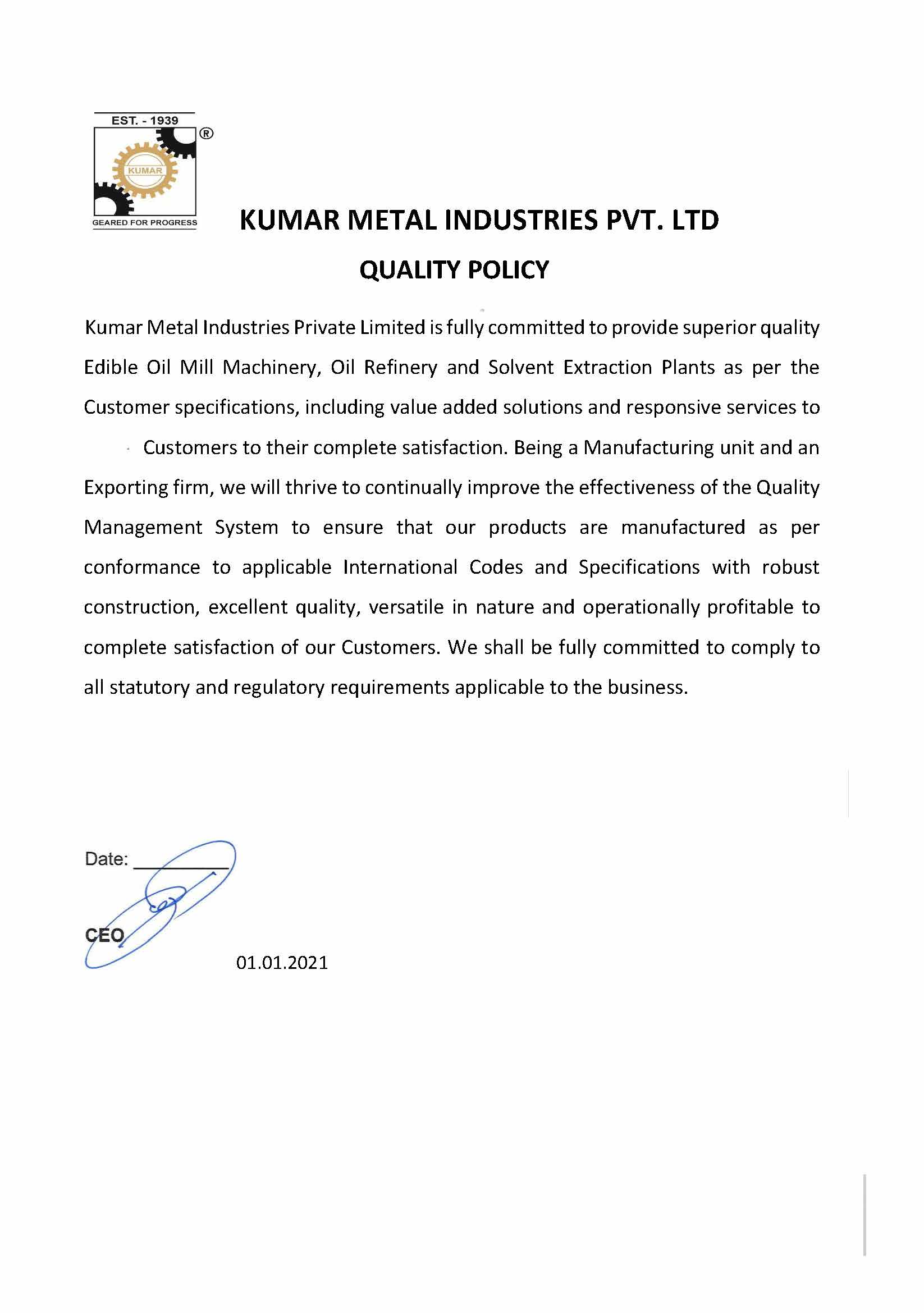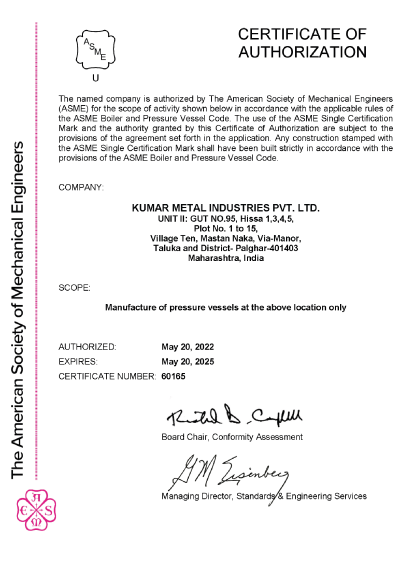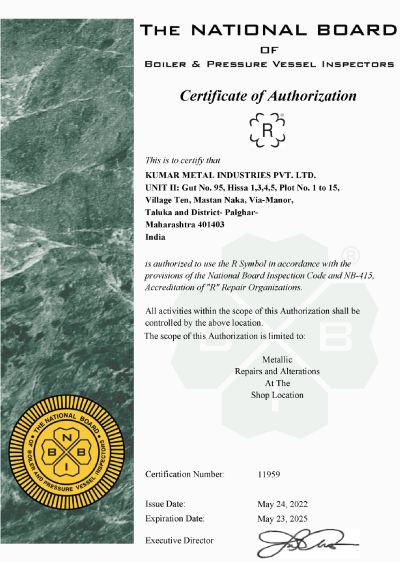
Fatty acids are long-carbon-chain molecules containing the –COOH, i.e., carboxylic acid group. The carbon chain length of fatty acids generally varies from four to even more than 30 carbon atoms. The natural fatty acids present in vegetable oils are mostly straight chain fatty acids. Animal fats, especially fish oils, and select plant seeds do contain some branched fatty acids or higher carbon chain lengths.
Fatty acids may or may not have unsaturation, i.e., double bonds. These unsaturated fatty acids may have one or more double bonds. Highly unsaturated fatty acids are generally found in fish oils.
Typical fatty acid molecule is represented as follows –
CH3 – (CH2)n – COOH where the number n can vary.
The number of carbon atoms in fatty acid molecules occurring in natural fats and oils are mostly even. However, some fatty acids containing odd numbered carbon atoms are also found in nature. Vegetable oils of plant origin mostly contain even numbered fatty acids. The odd numbered fatty acids are found in oils and fats of animal origin. Saturated odd-chained fatty acids – pentadecanoic (C15) acid and heptadecanoic (C17) acid occur commonly.
Fatty acids may also be classified depending on their carbon chain lengths. Those containing five or less carbon atoms are called as short-chain fatty acids (SCFA); for example, butyric (C4) acid. Medium-chain fatty acids (MCFA) contain 6 to 12 carbon atoms and these are used to produce medium chain triglycerides. Fatty acids with 13 to 21 carbon atoms in their molecules are called as long-chain fatty acids (LCFA). Fatty acids with carbon chains of more than 22 carbon atoms are known as very long chain fatty acids (VLCFA).
Many different functional groups may also be present in these fatty acid molecules, giving them special properties.
Major fatty acid classes are – saturated fatty acids, unsaturated fatty acids with – one double bond, two or more double bonds, conjugated double bonds, fatty acids containing hydroxyl (hydroxy) or epoxy groups, triple and double bonds, four or more double bonds.
The carbon-carbon double bond, C=C, present in fatty acid molecules can have either cis or trans configuration. These are also called as cis and trans isomers of the same chain-length fatty acids. CIS configuration means that the two hydrogen atoms adjacent to the double bond are on the same side of the carbon chain. This cis configuration bends the carbon chain of fatty acids. CIS configuration has higher energy than the TRANS configuration. Almost all unsaturated fatty acids found in vegetable oils contain cis double bonds.
TRANS configuration of the double bond means that the two adjacent hydrogen atoms are present on the opposite sides of the carbon chain. The trans configuration does not bend the carbon chain as much as the cis configuration, keeping the chain almost straight similar to that of saturated fatty acids. Trans fatty acids are found in oils and fats of animal origin. They are also formed during the process of hydrogenation of oils and fats containing unsaturated fatty acids, i.e., during the synthesis of hydrogenated fats.
Unsaturated fatty acids with cis configuration double bonds are considered as healthy, while those with trans configuration are considered as unhealthy. Hence, trans fatty acids containing foods have been banned in almost all countries today. The hydrogenated oils and fats used today do not contain any trans fatty acids (or contain negligible quantities). Modified hydrogenation processes and catalysts are being used today to produce these zero trans fatty acids (or oils and fats).
The following table lists the names of commonly found fatty acids of different types along with their systematic and common names, number of carbon atoms, and sources of these fatty acids found in nature. Only selected fatty acids of some types of fatty acids are listed here as an example.
TABLE 1: FATTY ACIDS AND THEIR SOURCES
| NO. OF CARBON ATOMS | SYSTEMATIC NAME | COMMON NAME | SOURCES |
| SATURATED FATTY ACIDS | |||
| 4 | Butanoic | Butyric | Milk fats |
| 6 | Hexanoic | Caproic | Milk fats, Coconut, Palm, Palm kernel |
| 8 | Octanoic | Caprylic | Milk fats, Coconut, Palm, Palm kernel |
| 10 | Decanoic | Capric | Milk fats, Coconut, Palm, Palm kernel, Sperm head oil |
| 12 | Dodecanoic | Lauric | Coconut oil (50%), Palm kernel, Milk fats |
| 14 | Tetradecanoic | Myristic | Nutmeg, Irvingla seed fats, Minor amounts in most fats |
| 16 | Hexadecanoic | Palmitic | Palm oil (40%), In nearly all oils and fats |
| 18 | Octadecanoic | Stearic | Widely distributed |
| 20 | Eicosanoic | Arachidic | Groundnut |
| 22 | Docosanoic | Behenic | Minor amounts in many seed fats |
| 24 | Tetracosanoic | Lignoceric | Minor amounts in many seed fats |
| 26 | Hexacosanoic | Cerotic | Plant waxes |
| 28 | Octacosanoic | Montanic | Bees wax and other waxes |
| 30 | Triacontanoic | Melissic | Bees wax and other waxes |
| UNSATURATED FATTY ACIDS – ONE DOUBLE BOND | |||
| 10 | 9-Decenoic | Caproleic | Milk fats |
| 12 | 9-Dodecenoic | --- | Milk fats |
| 14 | Tetracenoic | Myristoleic | Seed fats of Pycanthus kombo (23%), Whale oil, Milk fats |
| 16 | 9-Hexadecenoic | Palmitoleic | Nearly all fats, Marine oils (15 to 20%) |
| 18 | 6-Octadecenoic | Petroselinic | Pasley seed oil (75%) |
| 18 | 9-Octadecenoic | Oleic | Very common, about 40% of total fatty acids |
| 20 | 9-Eicosenoic | Gadoleic | Marine oils |
| 22 | 11-Docosenoic | Cetoleic | Marine oils |
| 22 | 13-Docosenoic | Erucic | Rapeseed (Mustard) oil (50%) |
| UNSATURATED FATTY ACIDS – CONJUGATED DOUBLE BONDS | |||
| 18 | Cis 9, trans 11, trans 13, Octadecatrienoic | Eleostearic (alpha) | Rosaceae and Euphorbiaceae families plant seed oils |
| 18 | Cis 9, trans 11, cis 13, Octadecatrienoic | Punicic (alpha) | Pomegranate seed oil (72%) |
| 18 | 18-Hydroxy, cis 9, trans 11, trans 13, Octadecatrienoic | Kamlolenic (alpha) | Euphorbiaceae family (Kamala oil 59%) |
| 18 | 4-Keto, cis 9, trans 11, trans 13, Octadecatrienoic | Licanic (alpha) | Rosaceae family (Oitticica oil 75%) |
| SUBSTITUTED UNSATURATED FATTY ACIDS – HYDROXY OR EPOXY GROUP | |||
| 18 | 12-Hydroxy, 9-Octadecenoic | Ricinoleic | Euphorbiaceae, Oleaceae families, Castor oil 90%) |
| 18 | 12, 13-Epoxy, 9-Octadecenoic | Vernolic | Compositae, Euphorbiaceae families |
| UNSATURATED FATTY ACIDS – TRIPLE OR TRIPLE AND DOUBLE BONDS | |||
| 18 | 6-Octadecynoic | Tariric | Simarubaceae family, Picramnia sow (90%) |
| 18 | 17-Octadecen-9,11-Diynoic | Isanic (Erythrogenic) | Olacaceae family, Isano oil |
| BRANCHED CHAIN FATTY ACIDS | |||
| 5 | 3-Methylbutanoic | Isovaleric | Dolphin and porpoise fats |
| 16 | 11-(2-cyclopentenyl)-Hendecanoic | Hydnocarpic | Hydnocarpus seed fats |
| 18 | 13-(2-cyclopentenyl)-Tridecanoic | Chaulmoogric | Hydnocarpus seed fats |
| UNSATURATED FATTY ACIDS – TWO DOUBLE BONDS | |||
| 10 | 2,4-Decadienoic | Stillingic | Stillingia oil (5%) |
| 18 | 9,12-Octadecadienoic | Linoleic | Widely distributed |
| 22 | 13,16-Docosadienoic | --- | Rapeseed (Mustard) oil |
| UNSATURATED FATTY ACIDS – THREE DOUBLE BONDS | |||
| 16 | 6,10,14-Hexadecatrienoic | Hiragonic | Sardine oil |
| 18 | 9,12,15-Octadecatrienoic | Linolenic | Many drying oils |
| 18 | 8,10,12-Octadecatrienoic | Calendic | Many drying oils |
| UNSATURATED FATTY ACIDS – FOUR AND MORE DOUBLE BONDS | |||
| 16 | 4,8,11,14- or 4,9,12,15-Hexadecatetraenoic | --- | Sardine oil |
| 18 | 4,8,12,15-Octadecatetraenoic | Moroctic | Sardine oil |
| 20 | 5,8,11,14-Eicosatetraenoic | Arachidonic | Animal fats |
The above list of fatty acids offers a glimpse of the wide variety of molecules available in nature. These may be separated from the respective fats and oils and converted to specific specialty derivatives, i.e., oleochemical derivatives, using different chemical processes.
Although these fatty acids are basic oleochemicals like glycerol (glycerine), they do not have many direct applications. They are mostly used as intermediates to produce a wide range of oleochemical derivatives, which have different functionalities and are used in many applications across industry sectors.
The most commonly available fatty acids are used for producing downstream oleochemical derivatives. Medium chain fatty acids (C6 to C12), stearic (C18), oleic (C18:1), linoleic (C18:2), ricinoleic (C18:1 hydroxy), etc. are some of the important fatty acids consumed on commercial scale.
From the point of human health, some fatty acids are considered as essential fatty acids. Fatty acids that are necessary for good health but cannot be made in sufficient quantities from other substrates by human body, and therefore they must be obtained from various food sources, are called as essential fatty acids. Humans cannot introduce double bonds in fatty acid molecules beyond carbon atom numbers 9 and 10, as counted from the carboxylic acid group. Linoleic (C18:2) acid (LA) and alpha-linolenic (C18:3) acid (ALA) are the essential fatty acids for human beings. These fatty acids are commonly available from plant seed oils. These fatty acids are needed to prepare long-chain omega-3 fatty acids – eicosapentaenoic acid (EPA) and docosahexaenoic acid (DHA). These fatty acid can be obtained from fish oils and certain seeds oils.
Request a callback
Since 1939, Kumar has been delivering dependable process engineering solutions to the oils and fats industry. We're known for our robustly engineered, versatile, and operationally profitable plant and machinery. It's why customers all over the world depend on us to solve their processing challenges, big or small. If you'd like to know more about our solutions, please fill out the form below:
"*" indicates required fields



















